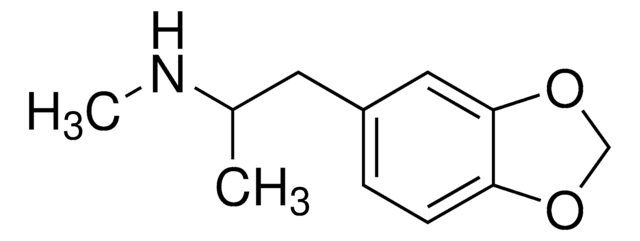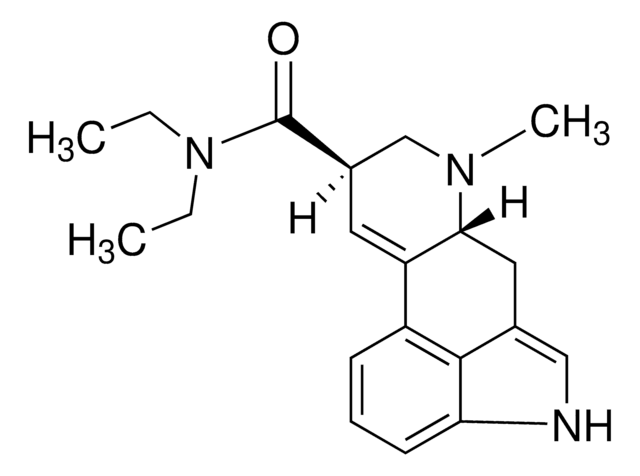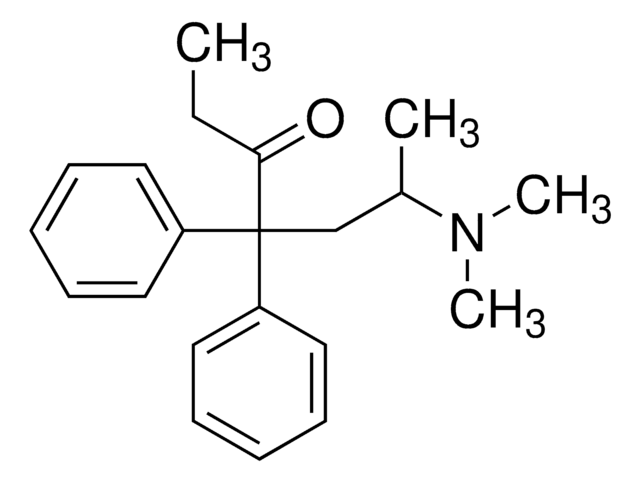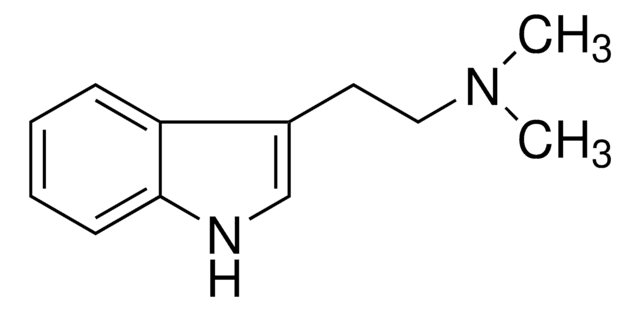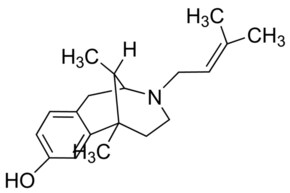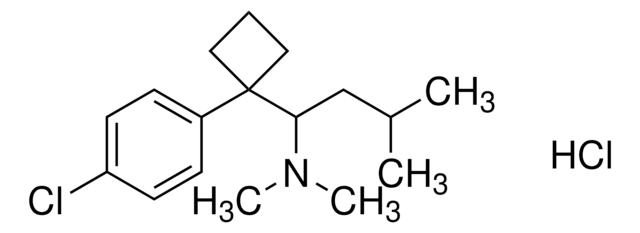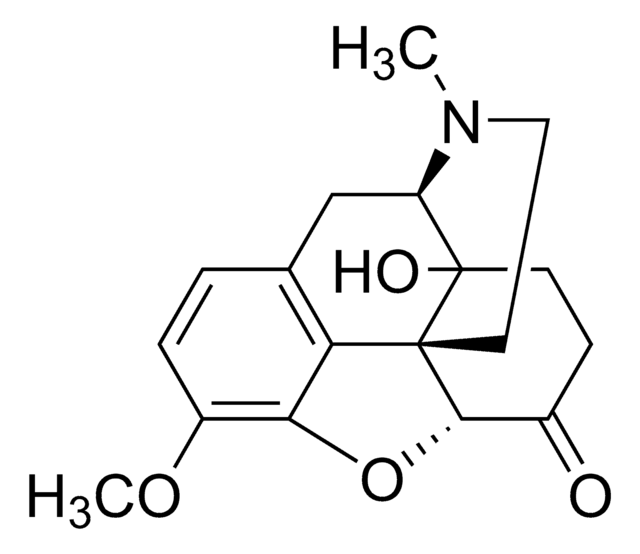P-007
PCP (Phencyclidine) solution
1.0 mg/mL in methanol, ampule of 1 mL, certified reference material, Cerilliant®
Synonyme(s) :
Phencyclidine
About This Item
Produits recommandés
Qualité
certified reference material
Forme
liquid
Caractéristiques
Snap-N-Spike®/Snap-N-Shoot®
Conditionnement
ampule of 1 mL
Fabricant/nom de marque
Cerilliant®
drug control
Narcotic Licence Schedule A (Switzerland); psicótropo (Spain); Decreto Lei 15/93: Tabela IIA (Portugal)
Concentration
1.0 mg/mL in methanol
Technique(s)
gas chromatography (GC): suitable
liquid chromatography (LC): suitable
Application(s)
forensics and toxicology
Format
single component solution
Température de stockage
2-8°C
InChI
1S/C17H25N/c1-4-10-16(11-5-1)17(12-6-2-7-13-17)18-14-8-3-9-15-18/h1,4-5,10-11H,2-3,6-9,12-15H2
Clé InChI
JTJMJGYZQZDUJJ-UHFFFAOYSA-N
Description générale
Application
- A Collaborative Platform for Novel Compound Identification - Characterization of Designer Phencyclidines (PCPs) POXP, PTHP, and P2AP: This research highlights a collaborative platform for the identification and characterization of novel designer PCPs, emphasizing their potential as analytical standards and sigma receptor agonists. The study provides valuable insights for scientists involved in receptor binding studies and the development of dissociative anesthetics for research (Sisco, Urbas, 2023).
- Long-term adaptation of prefrontal circuits in a mouse model of NMDAR hypofunction: Investigating the long-term effects of NMDAR hypofunction in mice, this study uses PCP to elucidate mechanisms of schizophrenia, showcasing its application as a NMDA receptor antagonist in neuropharmacological studies. The findings are crucial for advancing knowledge on neurotransmitter research and mental health disorders (Ponserre et al., 2024).
- 3-Methoxy-Phencyclidine Induced Psychotic Disorder: A Literature Review and an (18)F-FDG PET/CT Case Report: This review and case report discuss the psychiatric implications of 3-Methoxy-Phencyclidine, a derivative of PCP, providing insights into its effects on human cognition and behavior. Such studies are essential for developing high-purity PCP liquids for sigma receptor assays and understanding its role as a non-competitive NMDA antagonist (Pepe et al., 2024).
- Trips Through the Skin: Reviewing Cutaneous Drug Reactions to Psychedelics and Hallucinogens: This review explores the dermatological reactions associated with psychedelic drugs, including PCP. It underscores the importance of understanding the biochemical pathways affected by PCP, reinforcing its utility as a research chemical in pharmaceutical applications (Rahman et al., 2024).
- Novel α-amino-3-hydroxy-5-methyl-4-isoxazole-propionic acid receptor (AMPAR) potentiator LT-102: A promising therapeutic agent for treating cognitive impairment associated with schizophrenia: This research explores the potential therapeutic uses of AMPAR potentiators, highlighting PCP′s role in enhancing understanding of glutamatergic dysfunction in schizophrenia. It showcases PCP′s utility in developing treatments that modulate neurotransmitter systems, valuable for neuropharmacology research (Qi et al., 2024).
Informations légales
Mention d'avertissement
Danger
Mentions de danger
Conseils de prudence
Classification des risques
Acute Tox. 3 Dermal - Acute Tox. 3 Inhalation - Acute Tox. 3 Oral - Flam. Liq. 2 - STOT SE 1
Organes cibles
Eyes,Central nervous system
Code de la classe de stockage
3 - Flammable liquids
Classe de danger pour l'eau (WGK)
WGK 2
Point d'éclair (°F)
49.5 °F - closed cup
Point d'éclair (°C)
9.7 °C - closed cup
Certificats d'analyse (COA)
Recherchez un Certificats d'analyse (COA) en saisissant le numéro de lot du produit. Les numéros de lot figurent sur l'étiquette du produit après les mots "Lot" ou "Batch".
Déjà en possession de ce produit ?
Retrouvez la documentation relative aux produits que vous avez récemment achetés dans la Bibliothèque de documents.
Les clients ont également consulté
Notre équipe de scientifiques dispose d'une expérience dans tous les secteurs de la recherche, notamment en sciences de la vie, science des matériaux, synthèse chimique, chromatographie, analyse et dans de nombreux autres domaines..
Contacter notre Service technique